Artificial Intelligence in Transportation
Overview
Artificial Intelligence (AI) is transforming the transportation industry, leading to a more efficient, safer, and sustainable transportation system. Transportation AI has revolutionized the way we travel, from the use of autonomous vehicles to optimizing traffic flows in real-time. The application of transportation AI is diverse, ranging from improving public transport to enhancing supply chain management. The integration of AI in transportation is not limited to the development of self-driving cars; it includes the use of predictive analytics, machine learning, and computer vision technologies to enable data-driven decision-making and automation of various transportation processes.
Introduction
Transportation AI is a powerful tool that has the potential to revolutionize the way we travel, transport goods, and manage traffic. The use of AI in transportation has gained significant attention in recent years due to the increasing demand for more efficient, safe, and sustainable transportation systems.
The transportation industry is one of the largest and most complex sectors, involving a wide range of stakeholders and a vast amount of data. Transportation AI can help optimize various transportation-related tasks, such as route planning, traffic management, vehicle maintenance, and supply chain management.
AI in Transportation
Transportation AI has enabled the development of smart and connected transportation systems that can optimize traffic flows, reduce congestion, and improve safety. AI-powered transportation systems use data from various sources, such as sensors, cameras, and GPS devices, to analyze traffic patterns, identify congestion hotspots, and make real-time traffic predictions.
One of the most significant applications of transportation AI is in the development of autonomous vehicles. Self-driving cars use a combination of sensors, machine learning algorithms, and computer vision technologies to navigate roads and avoid obstacles. Autonomous vehicles have the potential to reduce accidents, increase fuel efficiency, and provide more accessible transportation for people with disabilities.
Another application of transportation AI is in the development of smart traffic management systems. These systems use real-time data to optimize traffic flows and reduce congestion. Smart traffic management systems can adjust traffic signal timings, redirect traffic to less congested routes, and provide real-time traffic updates to drivers.
Transportation AI also plays a crucial role in supply chain management. AI-powered logistics systems can optimize delivery routes, track shipments in real-time, and predict supply chain disruptions. The use of transportation AI in supply chain management can help reduce transportation costs, improve delivery times, and increase overall efficiency.
However, the implementation of transportation AI also presents some challenges. One of the most significant concerns is the potential impact on jobs, as automation could lead to the displacement of drivers, dispatchers, and other transportation-related jobs. Another challenge is the ethical and regulatory concerns related to the use of autonomous vehicles and other transportation AI technologies.
Applications of AI in the Transportation Industry
Transportation AI has a wide range of applications, from self-driving vehicles to traffic flow analysis. Let's explore some of the most significant applications of AI in transportation:
Self-Driving Vehicles
Self-driving vehicles are one of the most significant and disruptive applications of transportation AI. Self-driving cars, also known as autonomous vehicles, use a combination of sensors, cameras, and machine-learning algorithms to navigate roads and make decisions.
Self-driving vehicles have the potential to revolutionize the transportation industry in many ways. First and foremost, they can significantly improve safety on the road. Self-driving cars can react much faster than human drivers, and they can constantly monitor their surroundings using a variety of sensors, such as lidar, radar, and cameras. This means that self-driving vehicles can avoid accidents caused by human error, such as distracted driving, fatigue, and alcohol impairment.
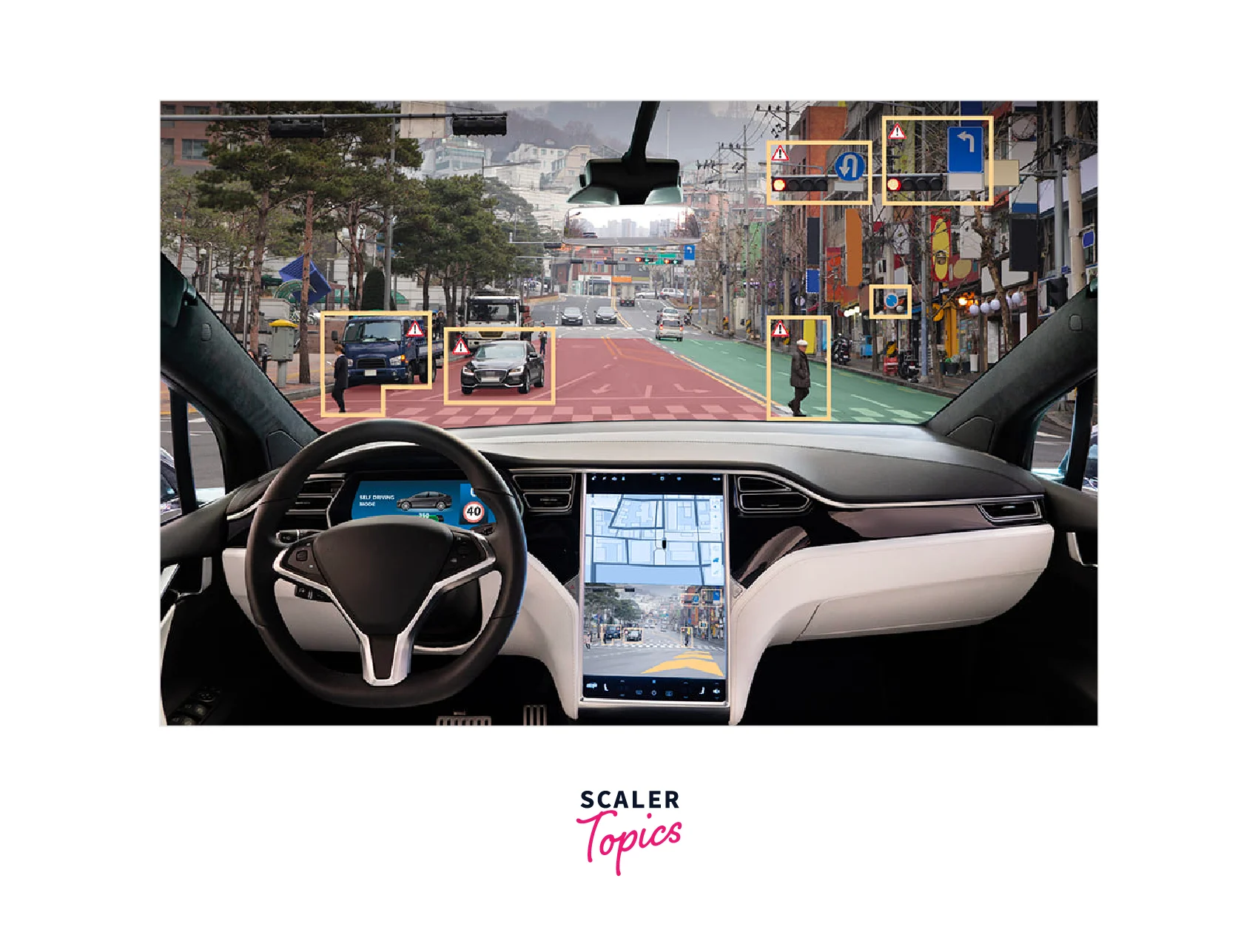
In addition to improving safety, self-driving vehicles can also provide significant environmental benefits. Autonomous vehicles can optimize their driving patterns and reduce fuel consumption, resulting in lower emissions and a reduced carbon footprint. Self-driving vehicles can also help reduce traffic congestion and commute times, as they can communicate with each other and optimize traffic flow.
Another benefit of self-driving vehicles is their potential to improve accessibility for people with disabilities or limited mobility. Autonomous vehicles can provide more accessible and convenient transportation options, allowing people who are unable to drive to have greater independence and mobility.
However, the implementation of self-driving vehicles also presents some challenges and concerns. One of the primary challenges is the need for significant investment in infrastructure and technology. Autonomous vehicles require a complex ecosystem of sensors, cameras, mapping technologies, and software, which can be expensive and require significant investment.
Additionally, the development of autonomous vehicles raises ethical and regulatory concerns. As self-driving cars become more prevalent, it will be necessary to establish ethical and regulatory guidelines to ensure that they are safe and operate fairly and ethically. For example, there are concerns about the potential impact of self-driving vehicles on jobs in the transportation industry, as well as concerns about data privacy and security.
Overall, self-driving vehicles represent a significant opportunity for the transportation industry to improve safety, efficiency, and accessibility. However, the implementation of autonomous vehicles will require significant investment, as well as ethical and regulatory guidelines, to ensure that they operate safely and fairly.
Traffic Detection (and Traffic Signs)
Traffic detection and traffic sign recognition are other important applications of AI in the transportation industry. AI-powered traffic detection systems use sensors and cameras to monitor traffic conditions and provide real-time data to drivers, traffic management systems, and transportation authorities.
Traffic sign recognition technology uses computer vision algorithms to identify and interpret traffic signs, such as speed limit signs, stop signs, and yield signs. This technology can help drivers navigate unfamiliar roads and reduce the risk of accidents caused by missed or misinterpreted signs.
AI-powered traffic detection systems can also help optimize traffic flow by detecting and responding to congestion and accidents in real-time. This can reduce delays and improve safety on the road.
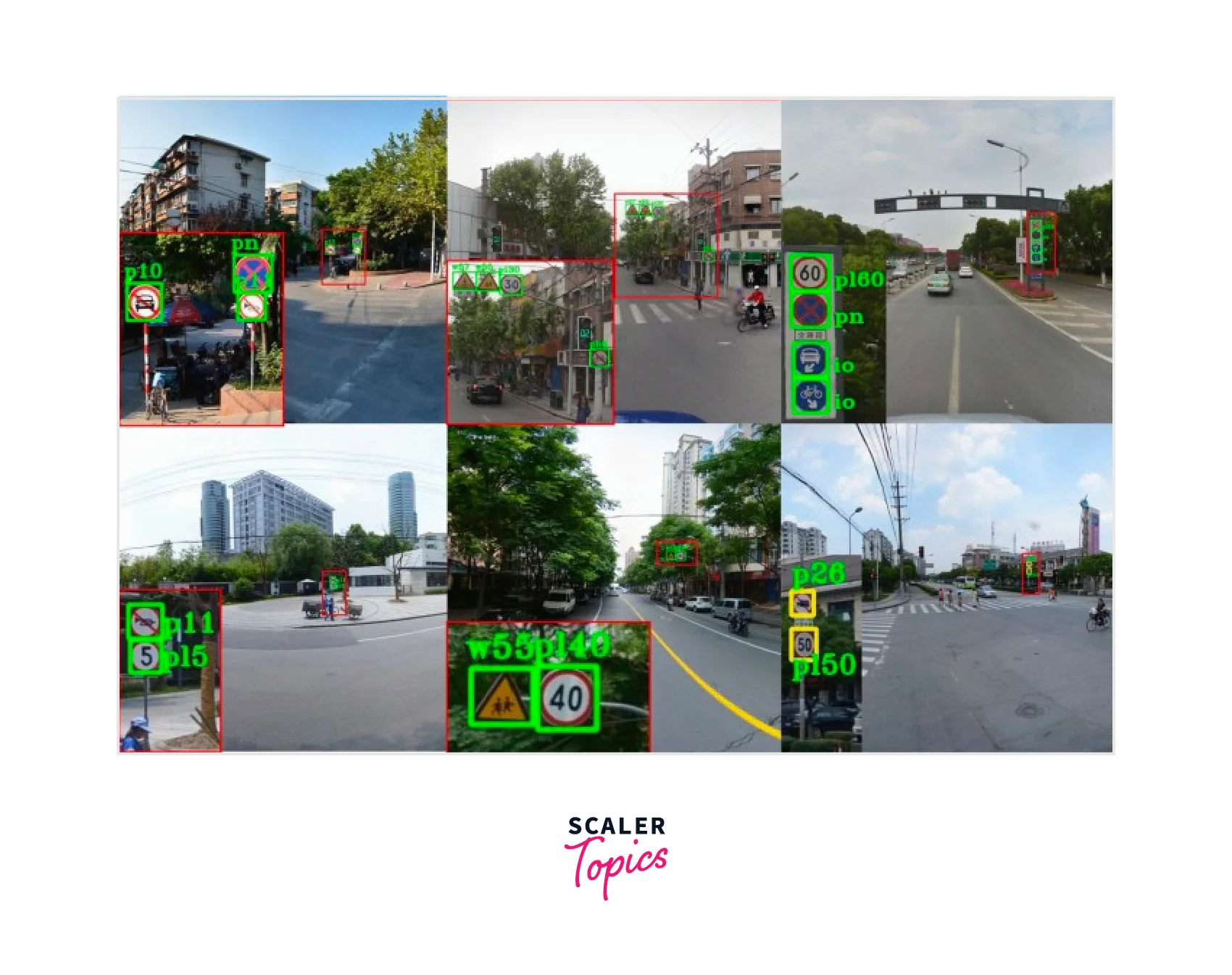
One of the most promising applications of traffic detection technology is in the development of intelligent transportation systems (ITS). ITS uses advanced technologies, such as AI and the Internet of Things (IoT), to improve transportation efficiency and safety. For example, ITS can provide real-time traffic updates to drivers, optimize traffic signals to reduce congestion, and enable autonomous vehicles to communicate with each other and with the transportation infrastructure.
However, there are also some challenges and concerns associated with traffic detection and traffic sign recognition technologies. For example, there are concerns about the reliability and accuracy of these systems, as well as concerns about the potential for data privacy and security breaches.
Pedestrian Detection
Pedestrian detection is an essential application of AI in the transportation industry that can significantly improve pedestrian safety. Pedestrian detection systems use computer vision algorithms and sensors, such as lidar and radar, to detect pedestrians in the surrounding environment and provide real-time alerts to drivers or autonomous vehicles.
Pedestrian detection technology can help reduce the risk of accidents involving pedestrians, particularly in urban areas where pedestrian traffic is high. The technology can detect pedestrians in a range of scenarios, including low-light conditions, adverse weather, and crowded areas. Pedestrian detection systems can also differentiate between pedestrians and other objects, such as bicycles and animals, to minimize false alarms.
In addition to improving pedestrian safety, pedestrian detection technology can also benefit the transportation industry by improving efficiency and reducing delays. For example, pedestrian detection systems can optimize traffic signals and pedestrian crossings to reduce congestion and improve the flow of pedestrian and vehicle traffic.
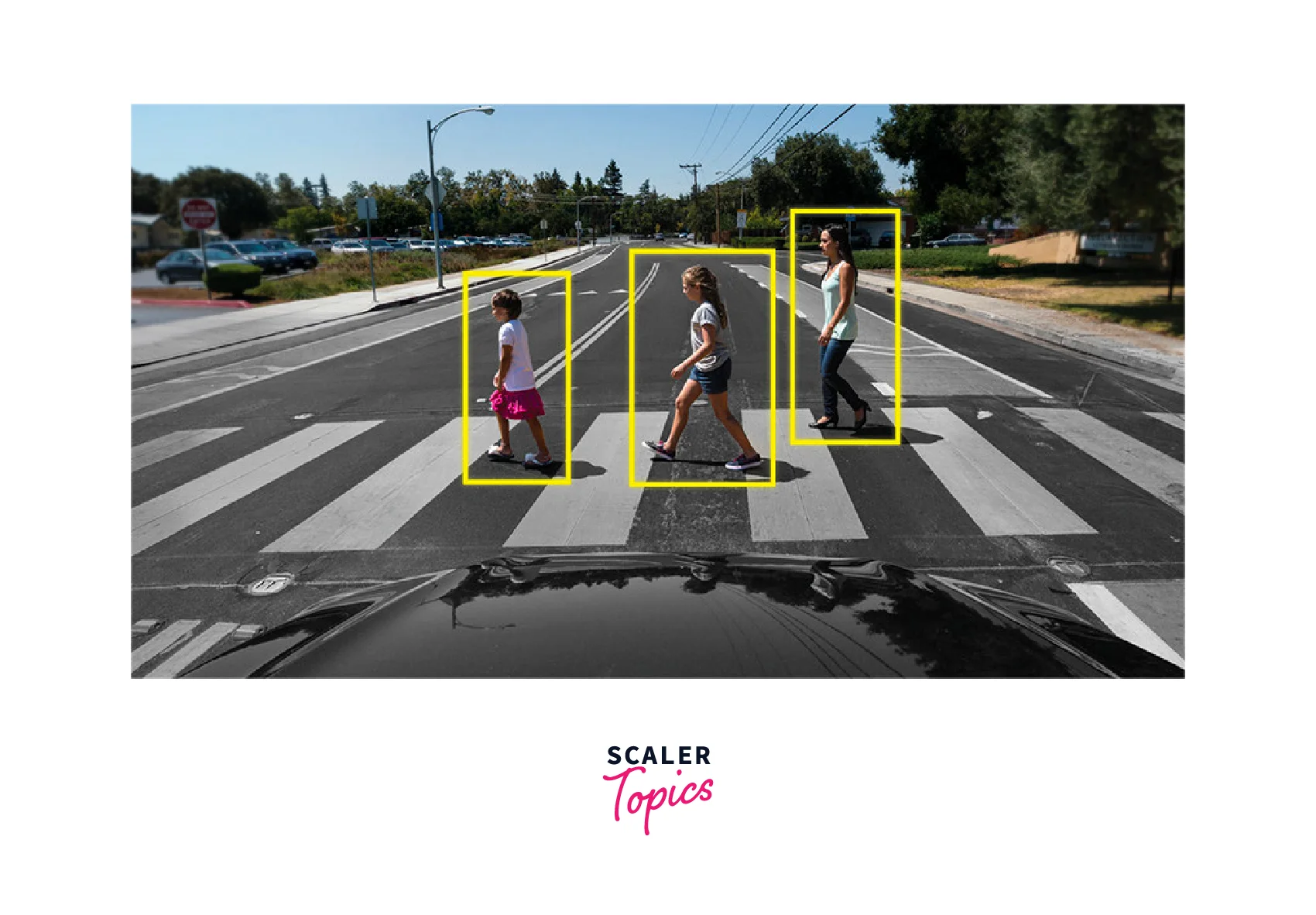
However, there are also challenges and concerns associated with pedestrian detection technology. One of the primary concerns is the accuracy and reliability of the technology. Pedestrian detection systems must be able to accurately detect pedestrians in a range of scenarios and environments to be effective. Additionally, there are concerns about the potential for false alarms, which can result in driver distraction or frustration.
Traffic Flow Analysis
Traffic flow analysis is a critical application of AI in the transportation industry that can help transportation authorities and engineers optimize traffic flow and reduce congestion. This technology uses machine learning algorithms and sensors to collect and analyze traffic data, such as traffic volume, speed, and density, to gain insights into traffic patterns and identify areas of congestion.
Traffic flow analysis can be used to optimize traffic signal timings, lane configurations, and speed limits to improve traffic flow and reduce delays. The technology can also be used to identify areas of the road network that are prone to congestion, allowing transportation authorities to develop targeted interventions to alleviate traffic.
AI-powered traffic flow analysis can also be used to predict traffic patterns and congestion in real time. This can allow transportation authorities to take proactive measures to manage traffic flow and reduce delays. For example, traffic flow analysis can be used to adjust traffic signal timings in real-time to accommodate changes in traffic patterns.
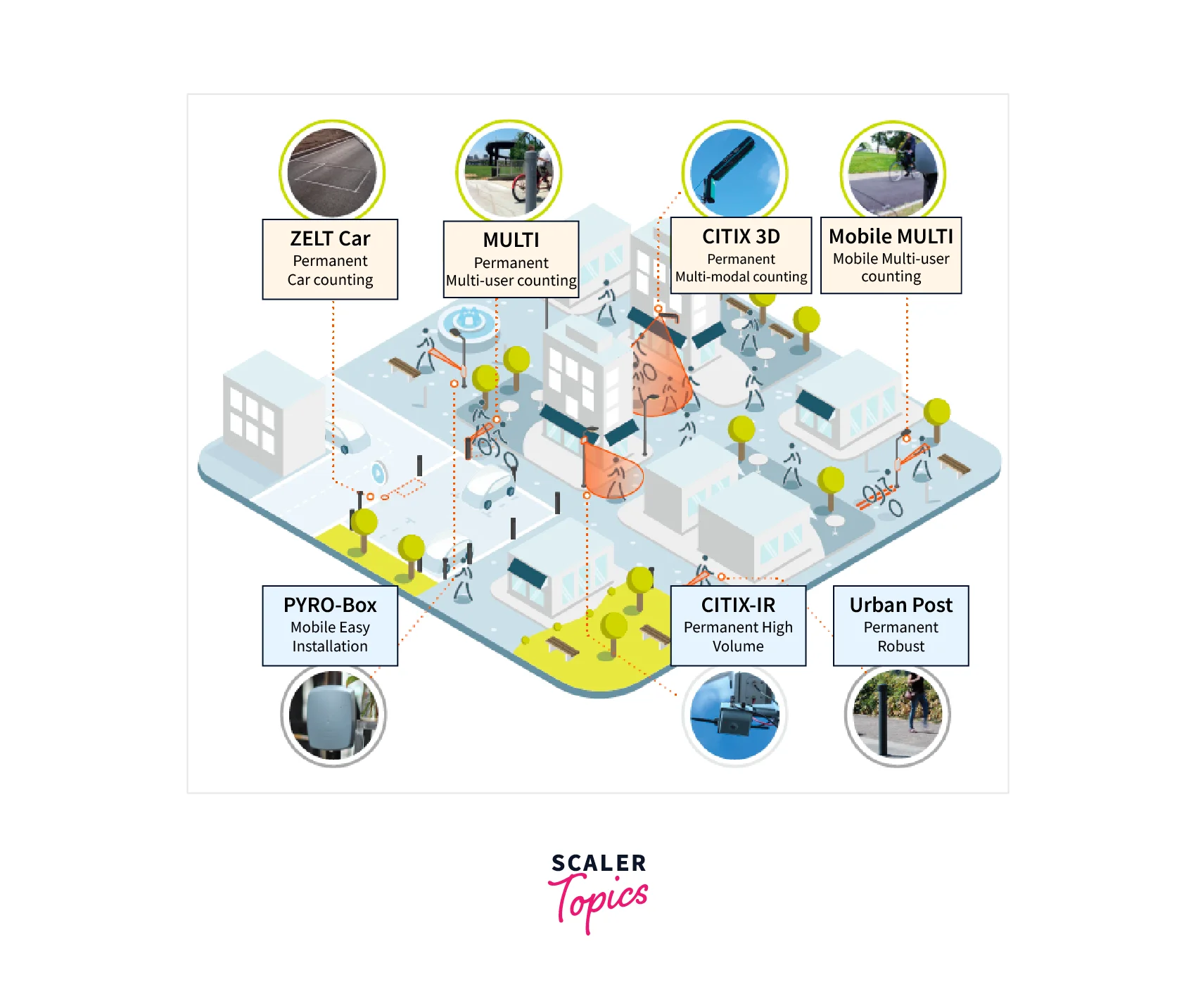
One of the key benefits of traffic flow analysis is its ability to improve safety on the roads. By reducing congestion and improving traffic flow, traffic flow analysis can help reduce the risk of accidents caused by congestion-related factors, such as sudden stops and rear-end collisions.
However, there are also challenges and concerns associated with traffic flow analysis technology. For example, there are concerns about the accuracy and reliability of the technology, as well as concerns about the potential for data privacy and security breaches.
Computer Vision-Powered Parking Management
Computer vision-powered parking management is an application of AI in the transportation industry that can improve the efficiency of parking management and reduce the time and effort required for drivers to find parking. This technology uses computer vision algorithms and sensors, such as cameras and lidar, to identify available parking spots and provide real-time information to drivers.
Computer vision-powered parking management systems can be used in a range of environments, such as parking garages, parking lots, and on-street parking. The technology can accurately detect available parking spots, as well as provide information on the location and availability of parking spots to drivers in real time. This can help reduce the time and effort required for drivers to find parking, as well as reduce congestion and improve traffic flow in areas with limited parking.
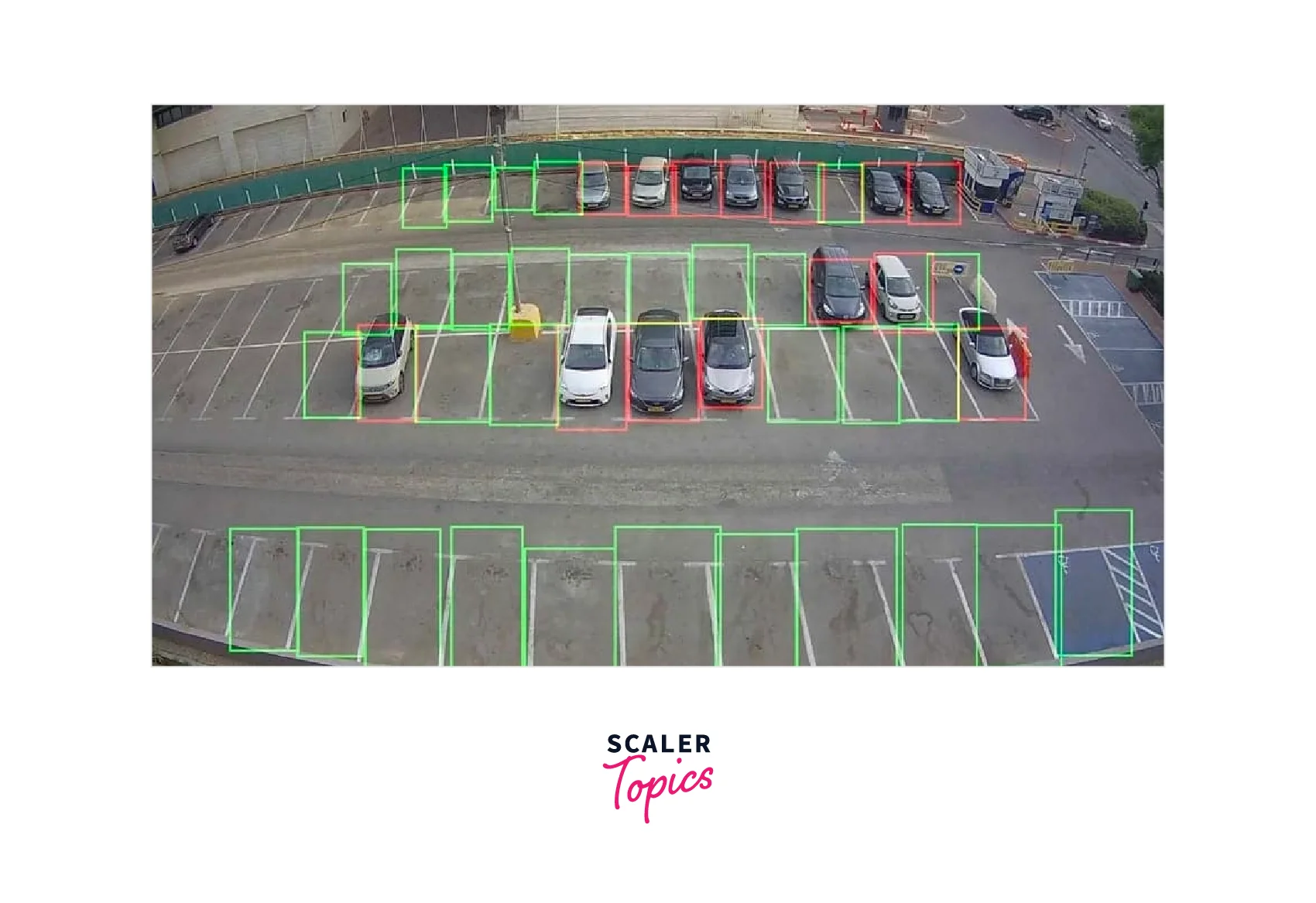
Computer vision-powered parking management systems can also help improve revenue for parking operators by optimizing parking pricing and occupancy. By analyzing parking data and demand patterns, the technology can help parking operators adjust parking prices and allocate parking spots to maximize revenue.
However, there are also challenges and concerns associated with computer vision-powered parking management technology. One of the primary concerns is the potential for data privacy and security breaches. Additionally, there may be concerns about the accuracy and reliability of the technology, particularly in complex or crowded parking environments.
Road Condition Monitoring
Road condition monitoring is an important application of AI in the transportation industry that can help ensure the safety of drivers and passengers by identifying and addressing issues with road conditions, such as potholes, cracks, and debris. This technology uses a range of sensors, such as cameras, lidar, and acoustic sensors, to collect data on road conditions and identify areas that require maintenance or repair.
AI-powered road condition monitoring can help transportation authorities prioritize road maintenance and repair efforts, as well as develop targeted interventions to address specific issues with road conditions. For example, the technology can identify areas of the road network that are prone to potholes or cracking and develop targeted interventions to address these issues before they become a safety concern.
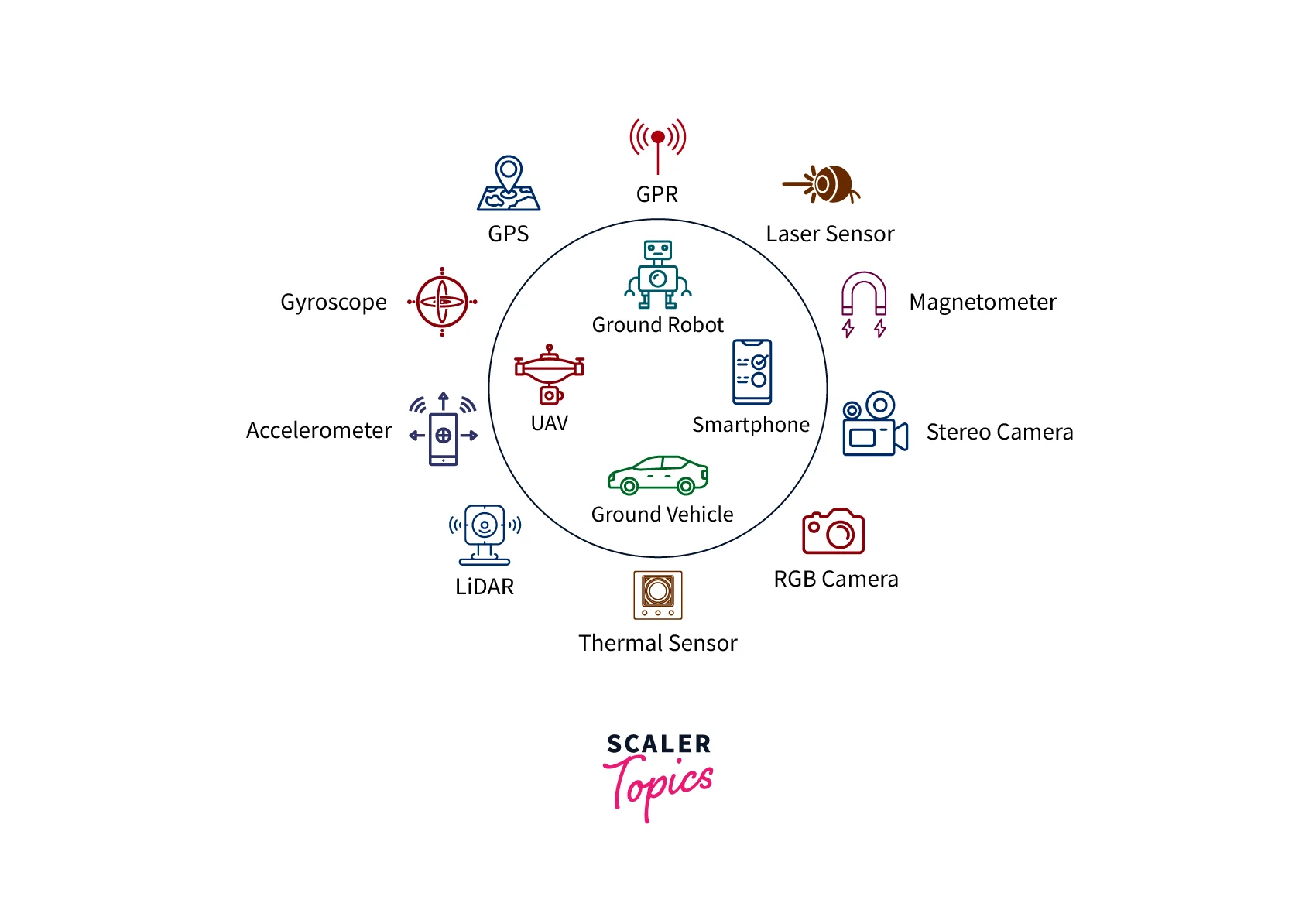
Road condition monitoring can also help improve the efficiency of road maintenance and repair efforts by allowing transportation authorities to allocate resources more effectively. By using real-time data on road conditions, transportation authorities can prioritize maintenance and repair efforts based on the severity of issues and the impact on traffic flow and safety.
One of the key benefits of road condition monitoring is its ability to improve safety on the roads by identifying and addressing issues with road conditions. By reducing the risk of accidents caused by poor road conditions, road condition monitoring can help save lives and reduce the economic impact of accidents.
However, there are also challenges and concerns associated with road condition monitoring technology. One of the primary concerns is the accuracy and reliability of the technology, particularly in adverse weather conditions or challenging environments. Additionally, there may be concerns about the cost and complexity of implementing the technology and the potential for data privacy and security breaches.
Automatic Traffic Incident Detection
Automatic traffic incident detection is an application of AI in the transportation industry that uses a range of sensors, such as cameras, lidar, and radar, to monitor traffic flow and identify incidents, such as accidents, breakdowns, and other disruptions to traffic. The technology uses machine learning algorithms to analyze the data collected by the sensors and identify incidents in real time.
Automatic traffic incident detection can help transportation authorities and emergency responders to quickly respond to incidents and minimize the impact on traffic flow and safety. By using real-time data on traffic conditions and incidents. The technology can help transportation authorities to prioritize resources and respond to incidents more effectively.
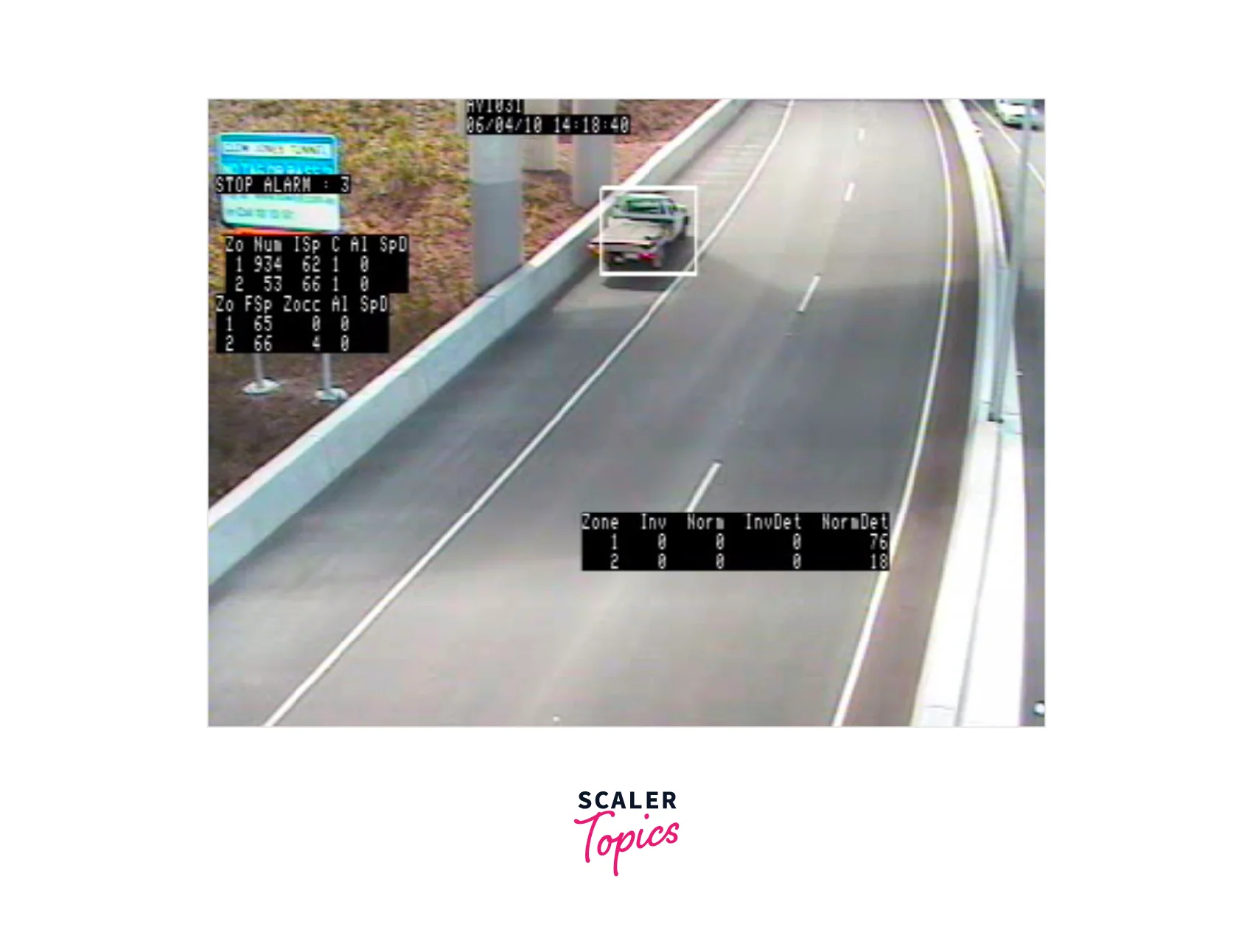
One of the key benefits of automatic traffic incident detection is its ability to improve safety on the roads by quickly identifying and addressing incidents that can cause accidents or disruptions to traffic flow. By reducing the time between incident detection and response, automatic traffic incident detection can help reduce the risk of accidents and improve traffic flow.
Additionally, automatic traffic incident detection can help improve the efficiency of traffic management by providing transportation authorities with real-time data on traffic conditions and incidents. This data can be used to optimize traffic flow, adjust traffic signals, and reroute traffic to avoid congested areas.
However, there are also challenges and concerns associated with automatic traffic incident detection technology. One of the primary concerns is the accuracy and reliability of the technology, particularly in complex or crowded traffic environments. Additionally, there may be concerns about the cost and complexity of implementing the technology and the potential for data privacy and security breaches.
Automated License Plate Recognition
Automated License Plate Recognition (ALPR) is an application of AI in the transportation industry that uses computer vision and machine learning algorithms to automatically recognize and read license plate numbers from images and video footage captured by cameras. This technology can be used for a variety of purposes, such as tolling, parking management, law enforcement, and border control.
ALPR technology works by capturing an image of a license plate using a camera and then using computer vision algorithms to isolate and enhance the image of the license plate. The system then uses optical character recognition (OCR) technology to extract the license plate number from the enhanced image. The extracted license plate number is then compared to a database of known license plate numbers, and if there is a match, the system can take action, such as charging a toll, issuing a parking ticket, or alerting law enforcement.

One of the key benefits of ALPR technology is its ability to improve the efficiency and accuracy of tolling, parking management, and law enforcement. By automating the process of license plate recognition and matching, the technology can significantly reduce the time and resources required to manage these processes manually. Additionally, ALPR technology can help reduce errors and improve accuracy by eliminating human errors and biases.
ALPR technology can also be used for security and surveillance purposes, such as border control and law enforcement. By using ALPR technology, law enforcement agencies can quickly and accurately identify vehicles associated with criminal activity or other security concerns.
However, there are also concerns and challenges associated with ALPR technology, particularly related to privacy and data security. There is a risk that ALPR technology could be used to collect and store personal data, such as license plate numbers and vehicle location data, without proper safeguards and oversight.
Driver Monitoring
Driver monitoring is an application of AI in the transportation industry that uses sensors and machine learning algorithms to monitor the behavior and performance of drivers. This technology can be used for a variety of purposes, such as improving safety, reducing accidents, and optimizing driver performance.
Driver monitoring technology works by using sensors, such as cameras or wearables, to monitor the driver's behavior and performance. The system can analyze the driver's movements, eye movements, facial expressions, and other behavioral indicators to detect signs of fatigue, distraction, or other issues that could affect driving performance.
One of the key benefits of driver monitoring technology is its ability to improve safety on the roads by identifying and addressing driver behavior that could lead to accidents. By alerting drivers when they exhibit signs of fatigue or distraction, driver monitoring technology can help reduce the risk of accidents and improve road safety.
Driver monitoring technology can also be used to optimize driver performance by identifying areas where drivers can improve their driving skills or behavior. For example, the technology can identify drivers who frequently brake too hard or who take turns too sharply and provide feedback to help them improve their driving habits.
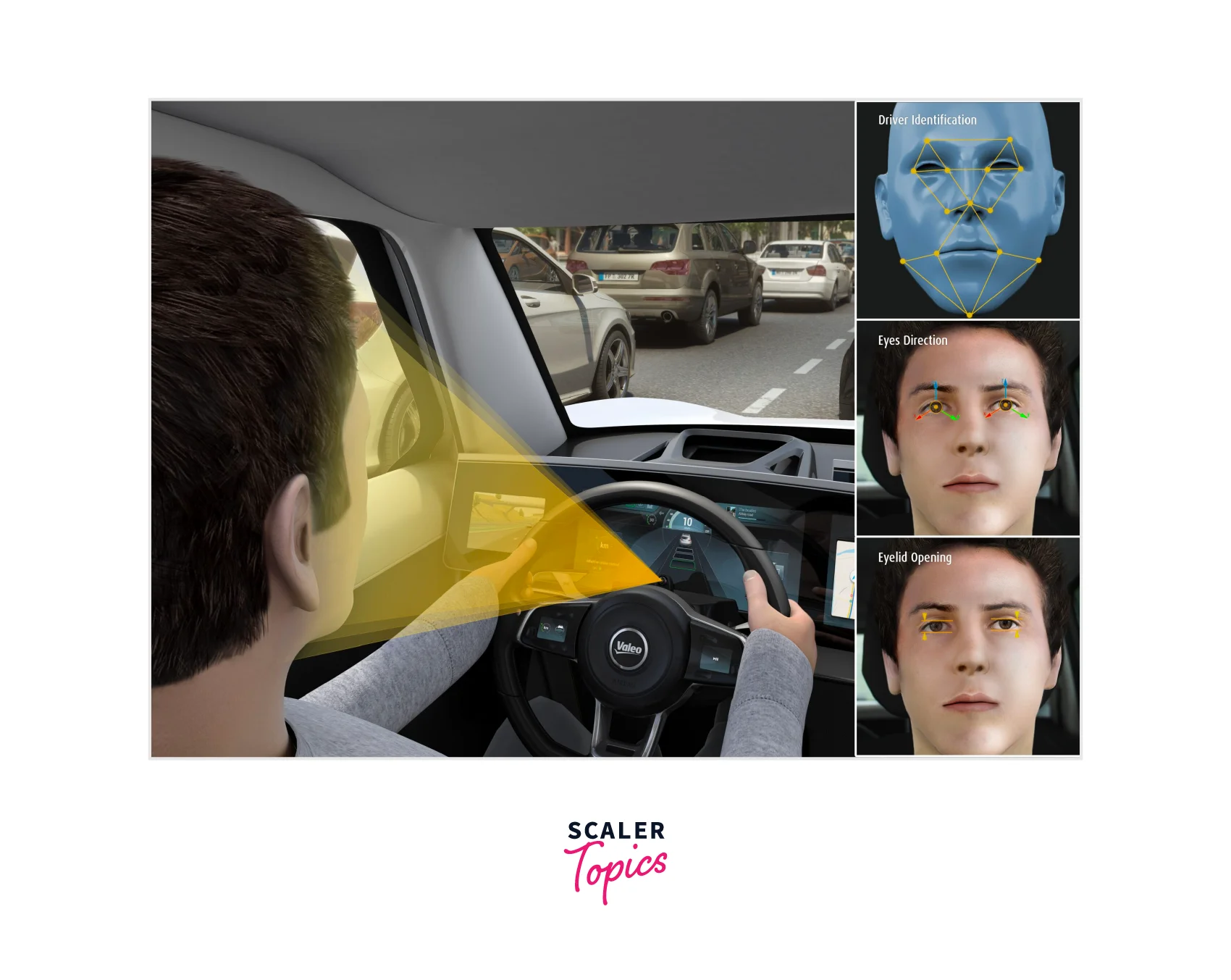
However, there are also challenges and concerns associated with driver monitoring technology, particularly related to privacy and data security. There is a risk that driver monitoring technology could be used to collect and store personal data, such as facial images or biometric data, without proper safeguards and oversight.
Overall, driver monitoring represents an important application of AI in the transportation industry that can significantly improve safety and optimize driver performance. However, the implementation of this technology requires careful consideration of ethical and regulatory concerns, as well as investment in infrastructure and technology.
AI In Transportation Industry: Final Thoughts
AI has become an important technology in the transportation industry, providing new opportunities to improve safety, efficiency, and sustainability. From self-driving vehicles and traffic flow analysis to parking management and driver monitoring, AI is transforming the way we think about transportation.
While there are many benefits to using AI in transportation, there are also challenges and concerns that must be addressed. For example, there is a risk that AI could lead to job losses and economic disruption, particularly in the transportation and logistics industries. Additionally, there are ethical and regulatory concerns related to privacy, data security, and algorithmic bias that must be carefully considered.
To fully realize the potential of AI in transportation, there must be a concerted effort to address these challenges and ensure that the technology is used responsibly and ethically. This includes investing in research and development to improve the technology and create new applications, as well as developing policies and regulations to ensure that AI is used safely and responsibly.
Overall, AI represents a transformative technology in the transportation industry that has the potential to improve safety, efficiency, and sustainability. By harnessing the power of AI, we can create a safer, more efficient, and more sustainable transportation system for the future.
Advantages of AI in the Transportation Industry
The use of AI in the transportation industry has several advantages that can improve safety, efficiency, and sustainability. Some of the key advantages of transportation AI include the following:
-
Improved safety: AI technologies such as self-driving vehicles and driver monitoring systems can significantly improve safety on the roads by reducing the risk of human error and detecting signs of fatigue, distraction, or other issues that could affect driving performance.
-
Increased efficiency: Transportation AI can optimize traffic flow and reduce congestion, leading to faster travel times and improved efficiency. Additionally, AI-powered logistics and supply chain management systems can improve delivery times and reduce costs.
-
Better environmental sustainability: AI-powered transportation systems can reduce fuel consumption and emissions by optimizing routes and reducing idling time. Additionally, electric and hybrid self-driving vehicles can help reduce the carbon footprint of the transportation industry.
-
Improved customer experience: AI-powered transportation systems can provide more personalized and efficient services to customers, such as real-time traffic updates, optimized routing, and personalized travel recommendations.
-
Enhanced data analysis: Transportation AI can process large amounts of data from sensors and other sources to provide insights into traffic patterns, customer behavior, and other factors that can inform decision-making and improve service delivery.
Disadvantages of AI in Transportation
While the use of AI in the transportation industry offers numerous benefits, there are also several potential disadvantages to consider. Some of the key disadvantages of transportation AI include the following:
- Job displacement: As AI technologies such as self-driving vehicles become more prevalent, there is a risk that they could displace human jobs in the transportation industry, particularly in areas such as truck driving, taxi driving, and delivery services.
- Technical complexity: AI-powered transportation systems can be complex and require significant technical expertise to develop, maintain, and operate. This can make them difficult and costly to implement, particularly for smaller companies.
- Security risks: As transportation systems become increasingly connected and reliant on AI, they may be vulnerable to cyberattacks and other security risks. This could potentially lead to disruptions in transportation services and compromise the safety of passengers and cargo.
- Lack of human judgment: While AI can provide efficient and data-driven decision-making, it may not always be able to account for unexpected events or make complex judgments that require human intuition and experience.
- Ethical concerns: The development and deployment of transportation AI raises ethical concerns around issues such as privacy, data security, and liability in the event of accidents or other incidents involving AI-powered vehicles or systems.
Conclusion
- Transportation AI is a rapidly growing field that utilizes AI and machine learning technologies to improve various aspects of transportation.
- The use of AI in transportation can bring significant benefits such as improved efficiency, safety, sustainability, and customer experience.
- Some of the key areas where AI is applied in transportation include self-driving vehicles, traffic detection, pedestrian detection, traffic flow analysis, and driver monitoring.
- However, there are also potential disadvantages of transportation AI such as job displacement, technical complexity, security risks, lack of human judgment, and ethical concerns.
- Despite the potential risks and challenges, transportation AI can be developed and deployed responsibly and effectively through careful consideration and mitigation of these risks.
- Overall, the use of AI in transportation has the potential to revolutionize the way we move people and goods around the world and bring about significant improvements in transportation systems.
